Web: the place for 21st century learning
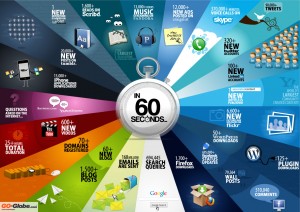
I love the Web and I spend more time teaching about it and the tools required to use it as a creative space than I do anything else. The Web is a limitless environment and, equipped with the right tools and knowledge, learners can create just about anything in that space. I’m teaching my S2 pupils web coding and styling that my previous Higher pupils wouldn’t have understood! Why, because the web is important and it’s the medium I’ve chosen to deliver much of the Curriculum for Excellence experiences and outcomes in Computing Science and ICT. As I’ve written before, CfE does allow Computing Science to be creative and innovative. Also the tools available to me as a teacher: Mozilla Webmaker, CodeAcademy, PSPU (and many others) make developing learner focused, self-paced activities straight-forward and more interactive than anything I could create on my own.
Web Literacy: a standard for all
 So, you can imagine my interest when the Mozilla Foundation made a recent announcement about Web Literacy. The Mozilla Foundation want us to think differently about the Web. Mozilla (and quite a few other organizations) are committed to making sure we all know it’s a platform, a non-mysterious, hackable machine intended to do our bidding.
So, you can imagine my interest when the Mozilla Foundation made a recent announcement about Web Literacy. The Mozilla Foundation want us to think differently about the Web. Mozilla (and quite a few other organizations) are committed to making sure we all know it’s a platform, a non-mysterious, hackable machine intended to do our bidding.
As Mozilla chair Mitchell Baker has said (clearly borrowing from Derek Robertson of our own Education Scotland) , “The average consumer does not know the difference between browser, Internet and search box … Moving people from consumption to creation is Mozilla’s goal.”
Having already invested heavily in developing the Webmaker programme which features great tools for learning to code and remix the web (Thimble, X-Ray Goggles/Hackasaurus, Popcorn Maker) it seems a logical next step for Mozilla to develop a set of standards to define how 21st century learners should be abled to Explore, Build for and Connect on the Web.
I was fortunate enough to catch a sneak peak at some of this work on Web Literacies last October when I caught up with Doug Belshaw, Badges and Skills Lead at the Mozilla Foundation, at the CAS Scotland Conference. I remarked at the time that I could see clear parallels between the technologies experiences and outcomes for CfE and the key elements of the emerging Web Literacies framework. Now, Mozilla have announced the launch of the beta version of the Web Literacy Standard on June 26th and there are a number of Google Docs where you can contribute to the creation of these standards. It’s at an early stage but feel free to contribute to the discussion.
Mapping the Web Literacy Standard to CfE
I thought it would be an interesting exercise to see how these evolving standards matched with our Curriculum for Excellence and new SQA National Qualifications in Computing Science.
What I’ve done is create a grid which shows where there are opportunities to engage with the Web Literacy Standard across the CfE levels and within the new National Qualifications for Computing Science. This is a “Work In Progress” but feel free to pitch in as the Web Literacy Standard develops.
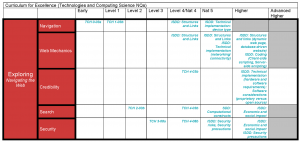
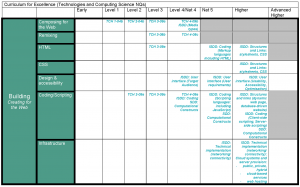

In my grid, where a Web competency row finishes with a greyed out box then I consider that this competency is fully achieved by the preceding CfE/NQ coverage. Where there is no greyed-out box then further enrichment activities would be required to achieve the Web Literacy Standard.
By mapping this to CfE we can show how our national curriculum contributes to Web Literacy and we can see where there are clear areas for development. Our new National Qualifications can provide excellent coverage of the Coding areas of the Web Literacy Standards however when it comes to assessing the credibility of sources, using open standards and understanding the infrastructure of the Web there are few opportunities to engage. Perhaps we need to consider this before we publish the final drafts of the qualifications (very soon!)?
By creating this Web Literacy Standard, together with learning resources to support it via the WebMaker programme and recognition of achievement through OpenBadges, Mozilla have presented educators with a clear framework for blended learning experiences related to the Web.
I’m looking forward to June 26th and I’ll be adding my tuppence worth to the evolving standards but perhaps there are a few things we can learn from Mozilla’s development.
Look again at Technologies in Curriculum for Excellence
Perhaps it is now time to return to our Technologies Experiences and Outcomes and consider how the world has changed in the nearly five years since we published our Experiences and Outcomes. Perhaps what we have is no longer fit for purpose? I always felt that some areas of the Es&Os, particularly “Technological development in society” have been more aimed at Design and Technology rather than embracing the larger digital world. Also, if we have “ICT to enhance learning” as an area for responsibility for all why isn’t it up there with Literacy, Numeracy and Health & Wellbeing? And how relevant is the current “ICT to enhance learning” in a future of BYOD and wider access to the Web?
Do we want to lag behind the rest of the world (Denmark, South Korea, Sweden, Iceland and Finland) in creating a generation of young people with digital skills?
Did you know that Scotland is only one of seven european nations that does not have a central monitoring mechanism for evaluating it’s ICT in Education strategy (Page 28, Key Data on Learning and Innovation through ICT at School in Europe 2011)
Perhaps we need to look at the big picture and consider if Digital Literacy, rather than “ICT to enhance learning”, should now join Numeracy, Literacy and Health & Wellbeing as an area for responsibility for all?
Maybe it is time to “put our money where our mouth is“ when it comes to technology and our digital future?
More information:

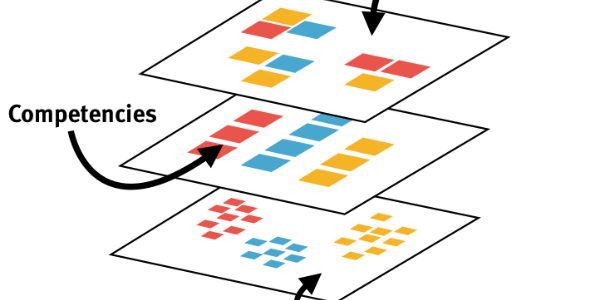
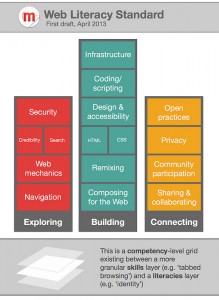
islayian
RT @charlie_love: Mozilla Web Literacy and Curriculum for Excellence: Web: the place for 21st century learning http://t.co/Zp7eyuDv35 #cfe
charlie_love
@dajbelshaw some work I’ve started on Mozilla Web Literacy and Curriculum for Excellence in Scotland: http://t.co/Zp7eyuDv35 #cfe
dajbelshaw
RT @charlie_love: @dajbelshaw some work I’ve started on Mozilla Web Literacy and Curriculum for Excellence in Scotland: http://t.co/Zp7eyuD…
CompEdNet
RT @charlie_love: Mozilla Web Literacy and Curriculum for Excellence: Web: the place for 21st century learning http://t.co/Zp7eyuDv35 #cfe
CILIPScotland
RT @charlie_love: @dajbelshaw some work I’ve started on Mozilla Web Literacy and Curriculum for Excellence in Scotland: http://t.co/Zp7eyuD…
bw_clark
@charlie_love this is really useful Charlie
bw_clark
RT @charlie_love: Mozilla Web Literacy and Curriculum for Excellence: Web: the place for 21st century learning http://t.co/Zp7eyuDv35 #cfe
joecar
@charlie_love @bw_clark Charlie a great piece of work and we have some deep engagement with Mozilla expect some more formal hook ups
joecar
RT @charlie_love: Mozilla Web Literacy and Curriculum for Excellence: Web: the place for 21st century learning http://t.co/Zp7eyuDv35 #cfe
joecar
@charlie_love @bw_clark SQA Computing team are looking for feedback on this https://t.co/lDVYY314LC worth having a look
XBorderDigital
RT @charlie_love: Mozilla Web Literacy and Curriculum for Excellence: Web: the place for 21st century learning http://t.co/Zp7eyuDv35 #cfe
grainnehamilton
MT“@charlie_love: Mozilla Web Literacy and Curriculum for Excellence: Web: 21st century learning http://t.co/iT62nX2tRY #cfe” Great stuff!
charlie_love
New Blog post today: Mozilla Web Literacy and Curriculum for Excellence: http://t.co/Zp7eyuDv35 #cfe
FionnCarmichael
RT @charlie_love: New Blog post today: Mozilla Web Literacy and Curriculum for Excellence: http://t.co/Zp7eyuDv35 #cfe
literacyadviser
RT @charlie_love: New Blog post today: Mozilla Web Literacy and Curriculum for Excellence: http://t.co/73Vt2ESExI #cfe
Bill Boyd (@literacyadviser)
Fascinating post Charlie. I can understand why you have matched the Web Literacy Standards against the CfE outcomes and experiences for technology, but I wonder whether it is also now time to map them against the Literacy outcomes and experiences. Now that would be progress, both in terms of integrating IT AND in providing a more appropriate definition of literacy in the digital age.
charlie_love
RT @literacyadviser: RT @charlie_love: New Blog post today: Mozilla Web Literacy and Curriculum for Excellence: http://t.co/73Vt2ESExI #cfe
kearneycath
RT @literacyadviser: RT @charlie_love: New Blog post today: Mozilla Web Literacy and Curriculum for Excellence: http://t.co/73Vt2ESExI #cfe
Joe Wilson (@joecar)
Bill
You are spot on and this would be a good piece of work to do.
SQA Consultation, Web Literacy and CfE | CompEdNet
[…] I’ve also posted a mapping of the evolving Mozilla Web Literacy Standard to Curriculum for Excellence that you can view via this post of my blog ( https://charlielove.org/?p=9305 ). […]
MoodleMcKean
Mozilla Web Literacy and Curriculum for Excellence http://t.co/rye2FQYiH7 #diglit #edtech #edchat